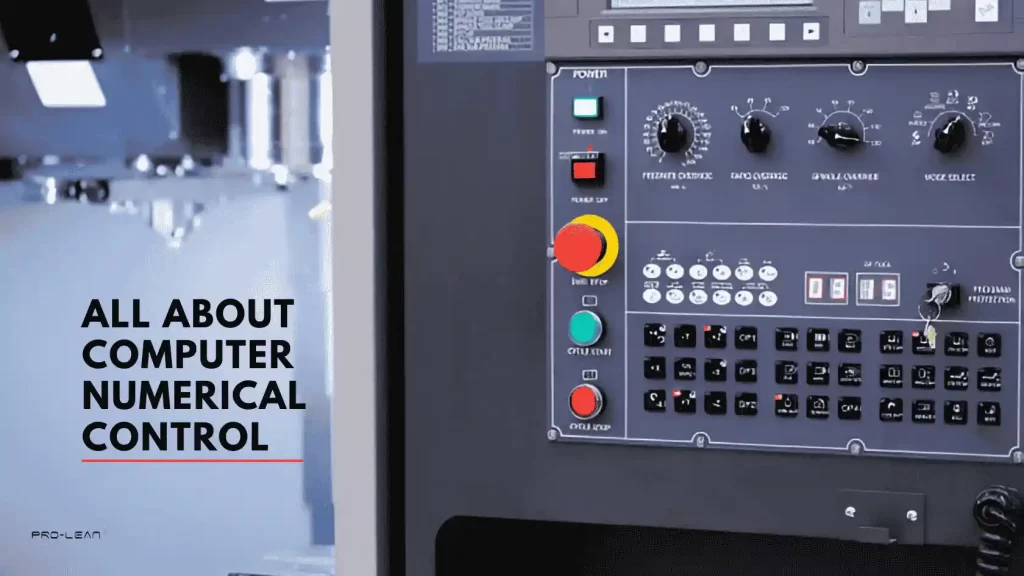
Computer Numerical Control
CNC, or Computer Numerical Control, is at the heart of modern manufacturing. On its own, it’s a set of codes stored on a computer. When connected to a machine, those codes accurately guide every move to cut, drill, and shape parts.
This has changed how industries work. Instead of doing the hard, laborious work, people now focus on design, setup, and checking quality, while CNC machines handle the heavy jobs. As a result, it supports faster production and reliable results.
In this guide, you will learn what computer numerical control manufacturing is, how it works, its uses, and why it matters. We will also cover CNC programming, software, benefits, and the challenges you may face.
What Is CNC System?
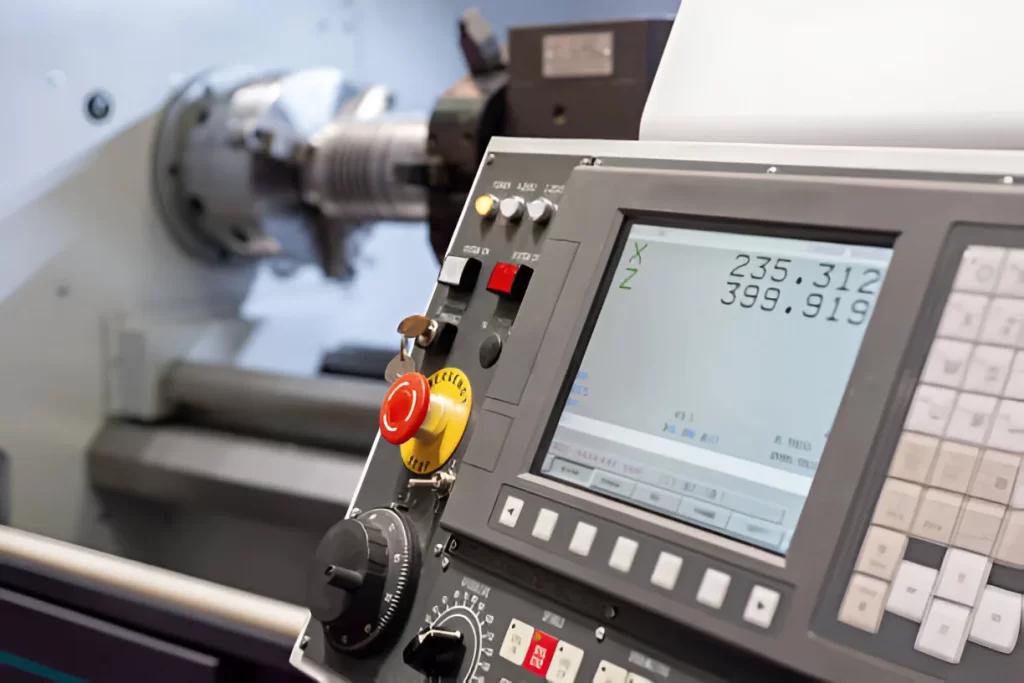
CNC Machine Panel
CNC (Computer Numerical Control) is a method of controlling machine tools with coded instructions. The actual language is G-code (and M-code). A computer provides the code that defines the tools’ path, position, and pattern in the x, y, and z directions. A code (generally G-code) guides the machine through a series of steps to cut or construct a piece.
Earlier numerical control systems required a manually programmed tool path. CNC eliminates that process. It automates the procedures to operate quickly, is highly accurate, and produces repeatable results.
You should bear in mind that CNC is not the machining itself. The operations are actual milling, turning, drilling, or routing. CNC is the control that operates those operations. It is found to be prevalent in subtractive machining, in which material is removed, but it can also be used with additive processes like 3D printing.
How Computer Numeric Control (CNC) Differs from Manual Control
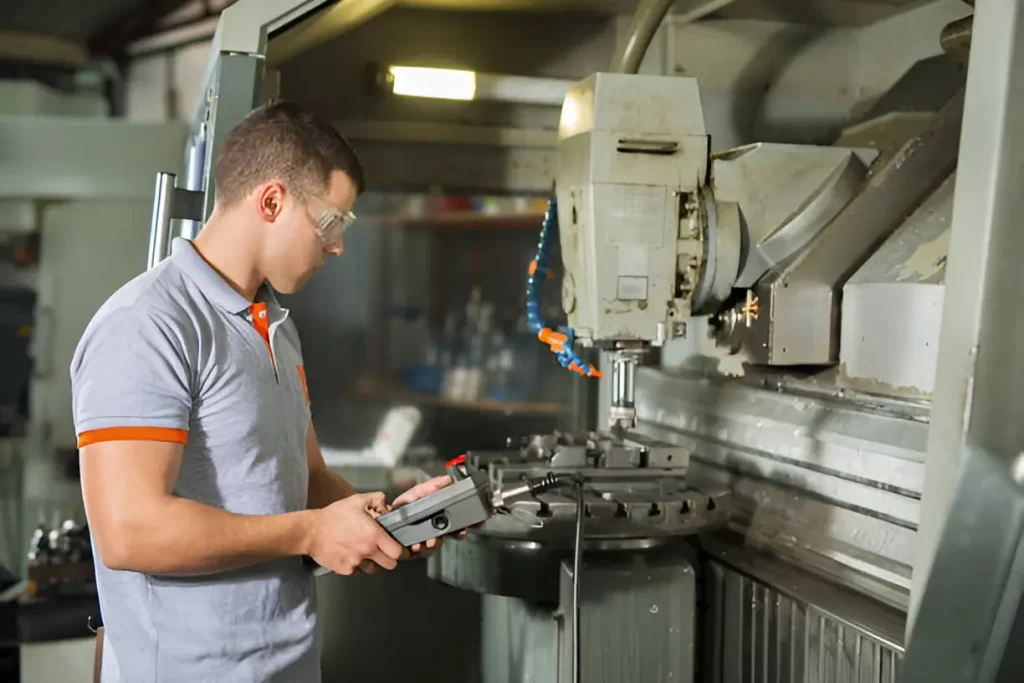
Metal Worker Controlling CNC Machine
Automation is a significant difference between CNC machines and manual control. Unlike with CNC, you only have to program the process once. Once that program has been developed, the subsequent production of any quantity of identical parts of consistent accuracy is possible.
All the operations are manually guided and handled by operators in manual machining. It’s not only more time-consuming and labour-intensive, but it also creates a greater possibility of part-to-part variations. CNC eliminates that burden so that production is more rapid, repetitive, and dependable.
Principal Parts of a CNC System
Though CNC machines have varied designs, the central parts are similar. Every component performs a unique set of functions that ensure the system runs smoothly.
MCU (CNC Controller)
The MCU controller is also referred to as the machine’s brain, as it reads the program, translates the instructions, and sends the signals to the machine’s moving parts.
Input Devices
They are used to load programs into the machine and to make specific basic settings. Typical ones are a keyboard, a mouse, or a USB interface.
Output Devices
These give the operator feedback about the machine’s status, either in terms of alarms or errors. The most popular output device is a display screen.
Software
CNC requires special software to produce and manipulate instructions. The part’s design is performed using CAD programs and then translated into machine code using CAM programs.
Try Prolean Now!
How CNC Guides Machine Tool Movements
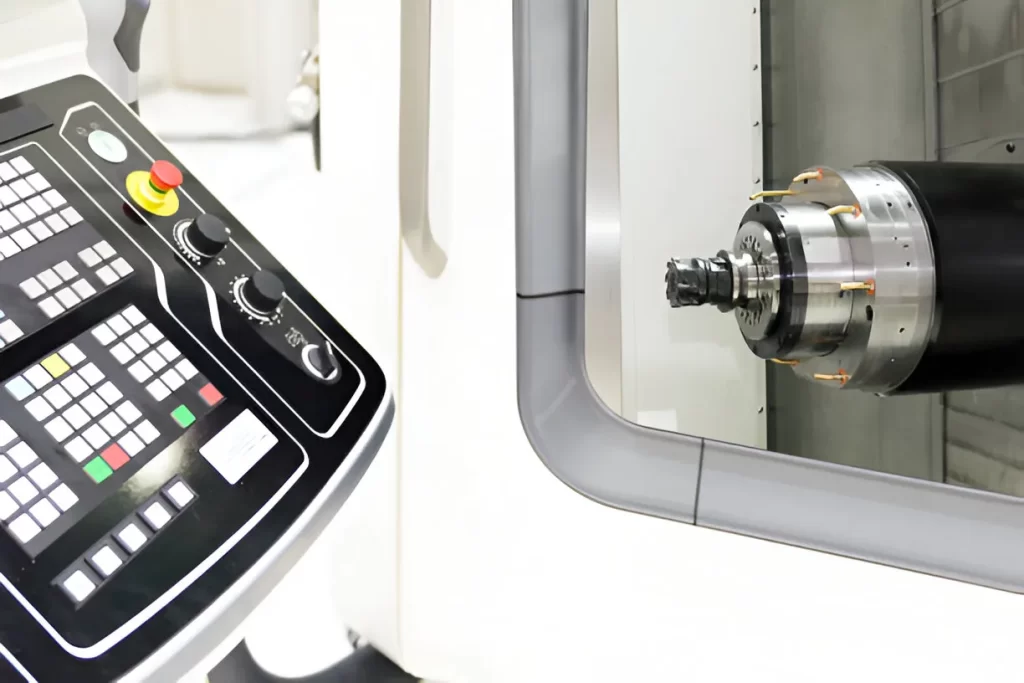
Horizontal CNC Milling
To comprehend CNC, you need to see how it manages tool paths. All CNC systems are based on three basic movement types.
Rapid Motion
Rapid motion transfers the tool between points as fast as possible. The tool will utilize the shortest route. This is time-saving but requires careful programming since even a slight mistake may lead to accidents.
Linear Motion
Linear interpolation in CNC can occur along any axis (X, Y, or Z) and diagonally by combining axes. It is not as fast as rapid motion, but simpler to install and safer to operate.
Circular Motion
Circular motion is the movement of a tool along a fixed axis in a curved path. It is applied when creating holes, slots, or cylindrical products.
CNC Control via Machine Control Unit
The Machine Control Unit is at the centre of the CNC system. This unit is the brain of the machine. It reads the program, decodes commands, and ensures that the tool will move in an intended way.
The unit consists of two parts. The first part contains two more parts: code, calculation, and tool paths, which the Data Processing Unit does. The Control Loop Unit receives feedback from the sensors and tunes movement to remain accurate.
How Does CNC Work
CNC has a programmed sequence of definite steps that converts the design into a finished piece.
Program Writing
The beginning phase is designing the part. Engineers make preliminary sketches or blueprints, which are passed on to the Computer Aided Design files. These CADs are converted to a readable code by the CNC machine with the help of CAM software. Before machining, a simulation should be run, which is advised to detect mistakes early.
Loading Program
When the program is complete, it is transferred to the CNC machine using standard data transfer. The operator loads the workpiece, programs the machine parameters to cut the part, and checks that a proper cut will be produced.
Implementation of the Program
The operator launches the CNC system when the program is in place and the settings verified. With accuracy and no human involvement, the machine follows the programmed paths with automatic action adjustments in response to the feedback from the machine sensors. This is repeated until the part is finished, an error arises, or the operator presses stop on the machine.
CNC Program Codes
Computer numerical control programming is mainly performed on two programming codes: G-code and M-code. Each of them has a particular role in the management of the machine.
G-Code
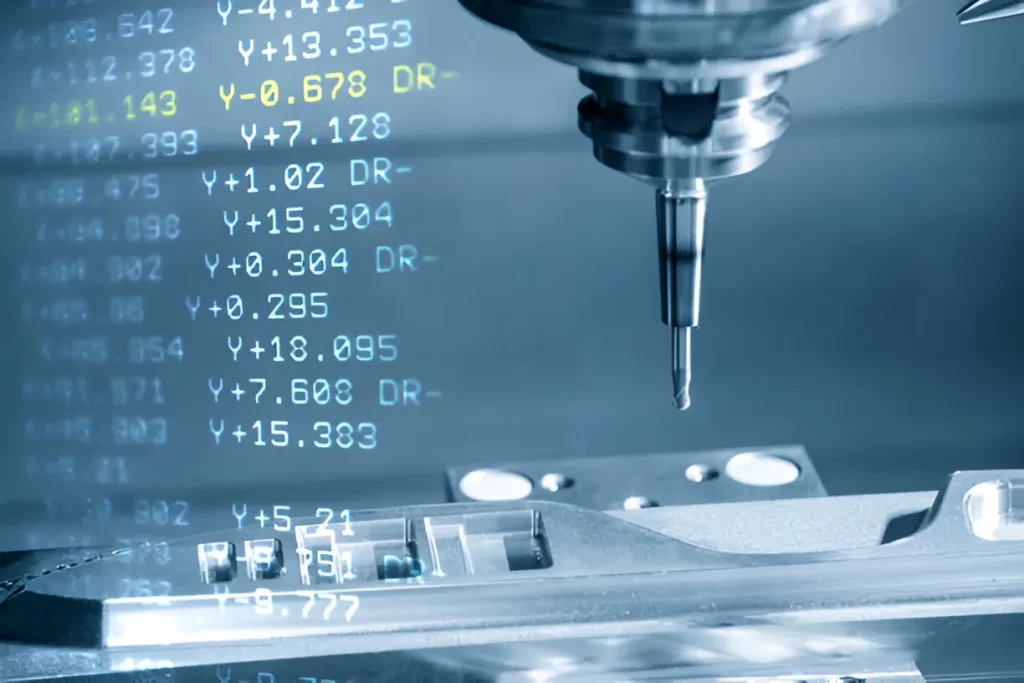
G-Code
G-code is used to move the machine and cutting tools. Geometry is G. It indicates to the machine where to go, when to begin, and when to stop. There is little difference in the formation of most of the CNC systems’ G-codes, with slight variation.
Essential G-code elements are:
- X, Y, Z: Coordinates for movement in 3 dimensions and define rotary axis movements.
- S: Speed of a spindle.
- Instructions to commence or halt specific machine actions.
M-Code
The M-code controls machine functions that are not connected to movement. The M may be machine or miscellaneous. These codes control such operations as starting or stopping coolant, changing tools, pausing the program, or halting operations.
G-code and M-code can be used to create an accurate automated part production.
Common CNC Operations and How They Work
CNC machines take programmed instructions into use to control their tools and make a part. The code identifies the movement, but the type of operation determines how material is added or removed. Operations are not the same as CNC applications. Operations are processes such as milling or turning, whilst applications constitute how to perform such processes.
CNC Milling

CNC Milling
The most popular CNC operation is milling. It cuts matter off an immovable work with a rotating blade. The machine moves along a tool path created by a CAD computer model, and knows where to cut and not to cut. The G-code instructs the machine to move along the X, Y, and Z axes. Milling may be time-consuming, depending on features and set-ups.
Contemporary 5-axis CNC mills can rotate along three new axes, making them more flexible than traditional 3-axis mills. This enables parts of complex geometries to be machined in a single setup, saving time and enhancing accuracy. Milling fits best on smooth surfaces, slots, or blind holes. (Also read: CNC Routing)
CNC Turning
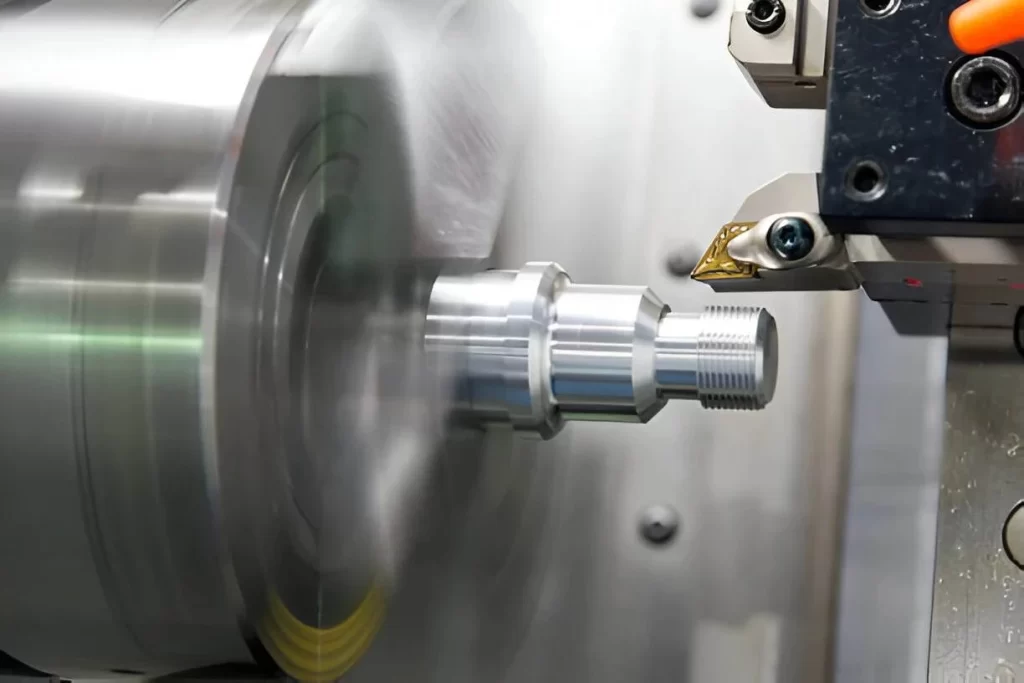
CNC Turning
Turning applies to cylindrical items, and it is performed on X and Z. The part rotates on a chuck, and a stationary tool cuts it away. This guarantees concentricity, ideal for shafts, rollers, or rods. G-code governs the movement of the tool in a lateral direction as well as the depth and speed of the spindle.
Exactness is essential with turning patterns, such as external threads, where inaccuracy in timing or depth can be disastrous in ensuring uniform results.
Laser cutting and Waterjet cutting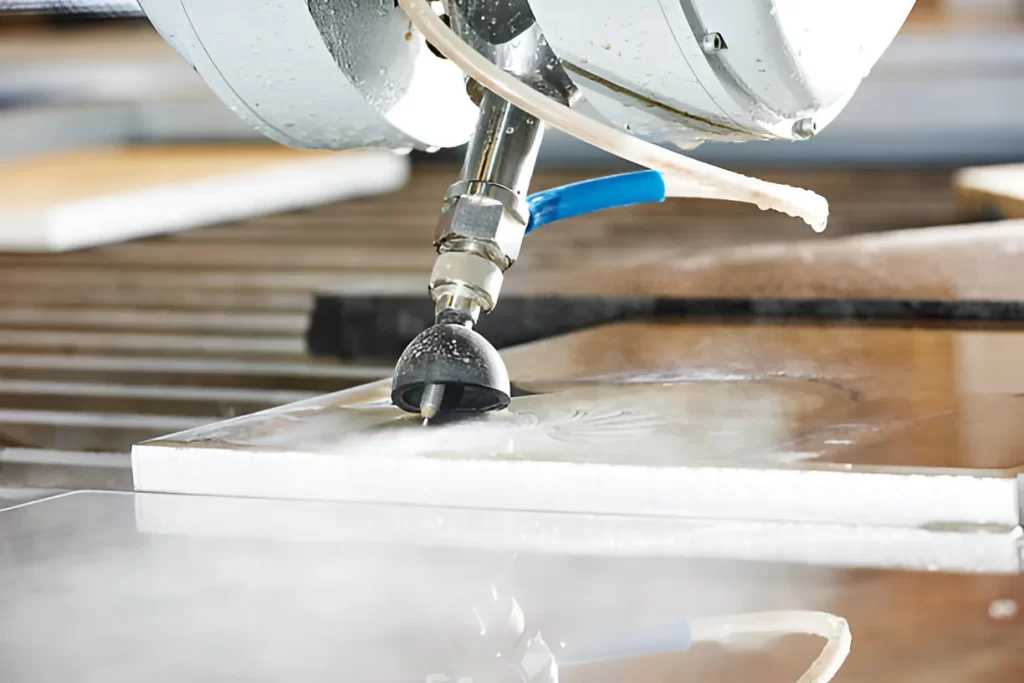
Metal cutting with water jet cutter
CNC laser cutting and waterjet cutters are primarily used when the geometries are 2-dimensionally based, i.e., flat sheet or through-hole patterns. Laser cutters are quick; however, the large parts may warp due to the heat. Waterjet cutting does not produce a heat-affected zone (no heat problems), and it does produce smooth edges with a narrow kerf.
The cutting path, head movement, and power are regulated by utilising the CNC program. Laser and waterjet techniques are productive with simple shapes or in the case of a speedy prototype, where precision is not a critical factor.
EDM (Electrical Discharge Machining)
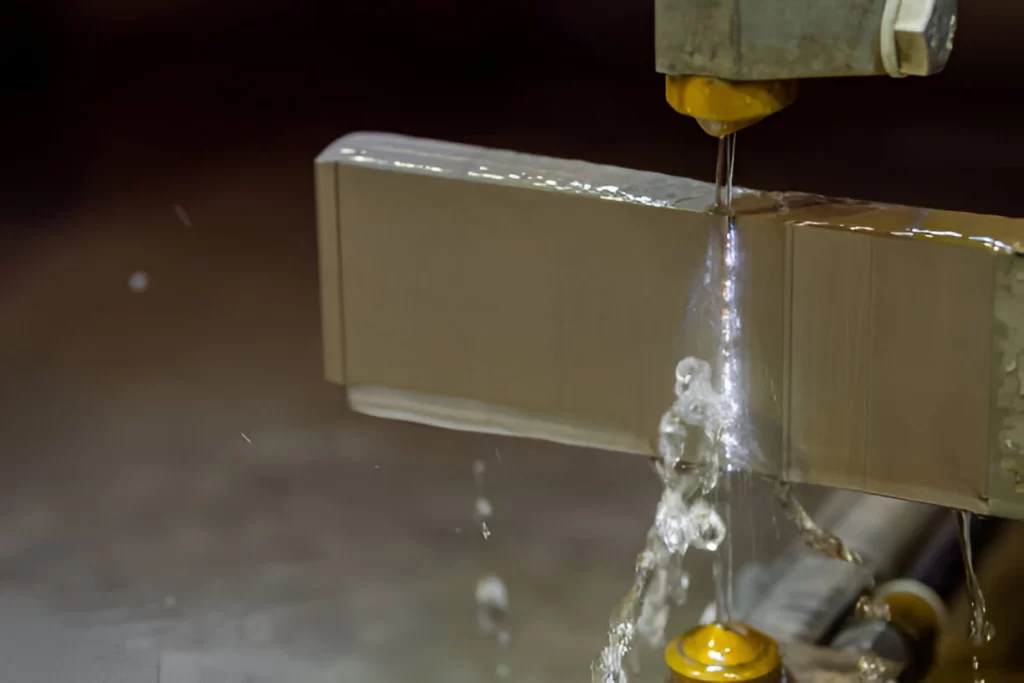
EDM Part Cutting
EDM is a precise technique adopted when cutting or milling is not exact enough to provide the necessary detail. It removes the material with the help of a shaped electrode, eroding microns of material per shot. Electrodes may be composed of copper, brass, tungsten alloy, or graphite, according to the part’s requirements and budget.
DM needs precision control of movement and power steps in the planes of X, Y, and Z. This is slower but perfect in attaining particular shapes and fine details not possible through other processes. (Read more about: CNC Grinding)
Additive CNC (3D Printing)
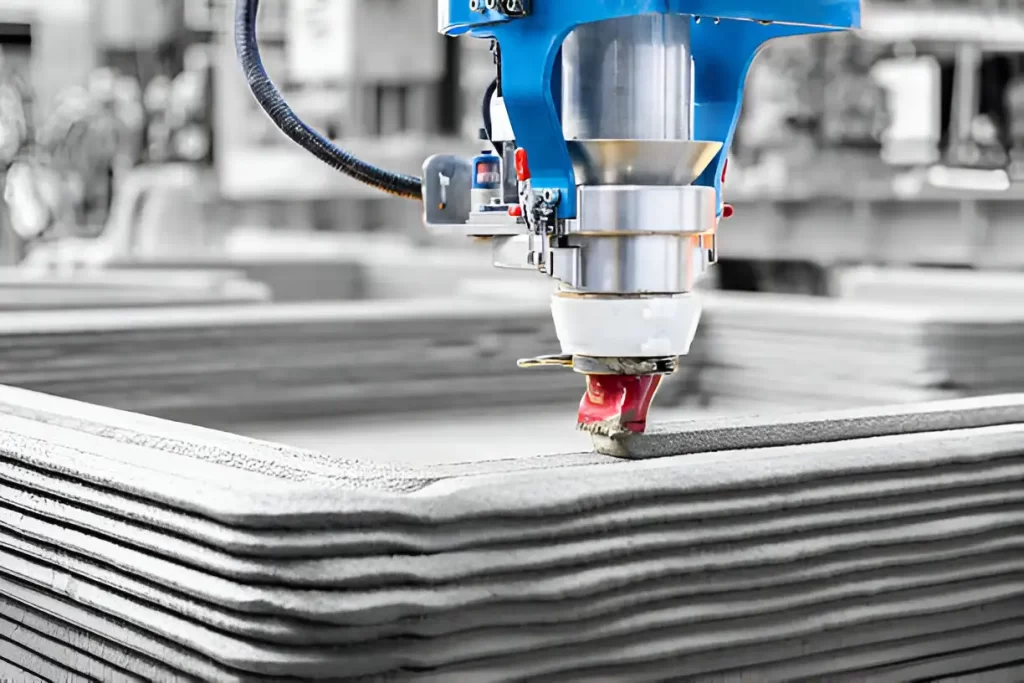
Industrial Construction 3D Printer
CNC technology has also been transformed into 3D printing, mostly Fused Deposition Modeling (FDM). Unlike the more conventional subtractive techniques (CNC Machining), 3D printing adds material in layers.
The software allows the machine to follow a set of G-code, which directs the position and movement of the nozzle, with other commands controlling material flow. This minimizes waste and is perfect for prototyping or producing complex geometrical shapes that are hard to make using traditional machining.
Try Prolean Now!
Handling CNC Software Tools and How They are Used
CNC machining relies on specialist computer numerical control software to program, execute, and optimise part manufacture. All the tools play a specific role in the workflow, starting with design and then machining.
Computer-Aided Design (CAD)
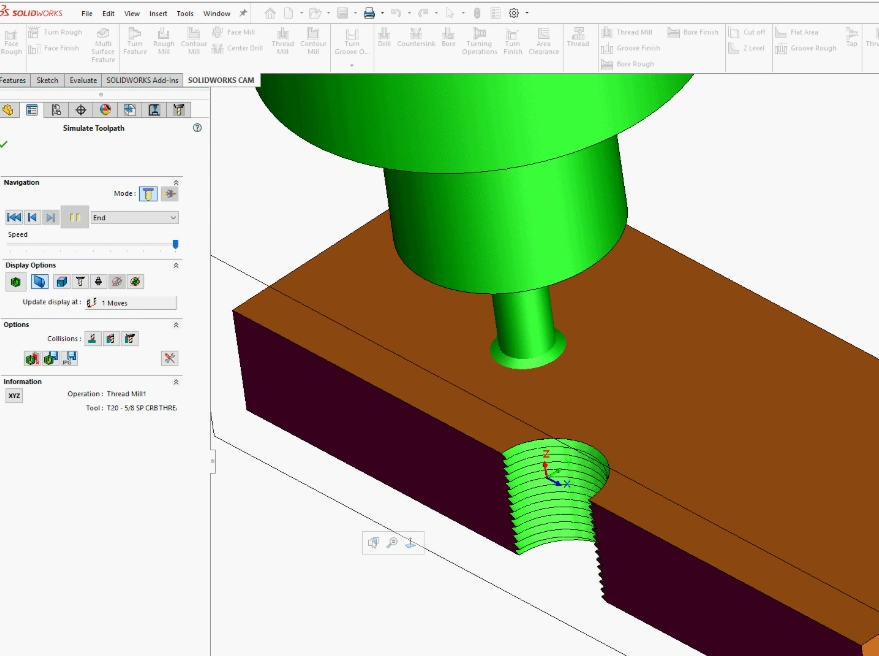
CAD Design
CAD software creates precise 2D or 3D drawings of parts. It enables you to visualise dimensions and features before machining the design, and thus, you get a practical and error-free design.
Computer-Aided Manufacturing (CAM)
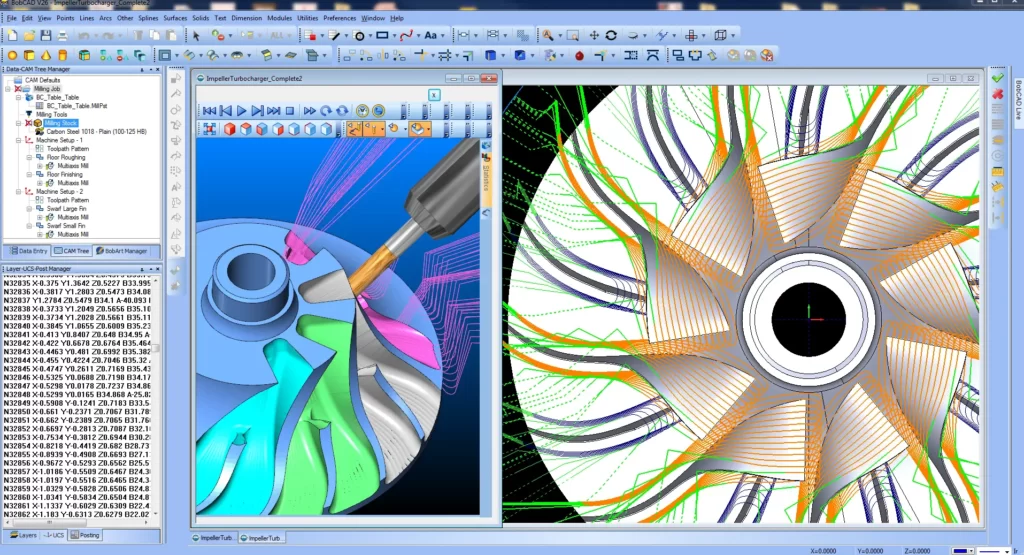
Processing design with CAM
CAD models are converted into machine instructions using the CAM software. It produces G-code, tool paths, and optimizes cutting sequences to save time and add efficiency. (Also read: CAD and CAM)
Computer-Aided Engineering (CAE)
CAE software analyzes the performance of the part in real conditions. It also screens structural weaknesses, wall thickness, and stress resistance to prevent failure during usage.
G-Code Editors
These G-code editors allow you to adjust the CNC lines of instructions. This provides accurate movements, eliminates minor errors, and ensures an efficient machining process for each part.
Simulation Software
Computer simulation programs enable one to test programs virtually before machining. It determines possible collisions, calculates the machining time, and minimizes material waste or damage to the machining machine.
Nesting Software
Nesting software optimally packs sheets or rolls with flat parts. It makes the best possible use of materials and keeps scrap to a minimum, particularly in the case of metal, composite, or plastic sheets.
Post-Processing Software
Design instructions are translated by post-processing software to machine-specific code. It also optimises tool paths to ensure smooth, precise, and reliable functionality.
Challenges in Computer Numerical Control Machining
CNC machining is prevalent in various industries, but also comes with problems. You must know these issues to make better plans and minimise risks.
Programming Complexity
Programming of CNC needs professional programmers. In complicated components, it may require a long time to write the correct code, and the cost of production increases. The programming error may cause material waste or a machine mistake.
Qualified Operating Needs
CNC machines should have trained operators. The operator should know how to load programmes, manipulate the parameters of machines, and monitor the machining process to ascertain quality and safety.
Safety Risks
CNC machines are faster and able to cut intricate pieces of material. Operators have to get adequate safety training, and the machines should have safety devices like guards and an emergency stop.
Limited Customisation
To make a part change, one will have to rewrite a program. Changes are hard to implement on the fly, so the flexibility of customised production is low.
Compatibility Issues
The CNC machines also require tools and systems identical to the machine design. It can also be costly to add new CNC functionality to existing configurations.
Conclusion
CNC controls machine tools by guiding them along precise paths to shape parts per their design specs. It works for simple designs to highly complex shape parts and components. It allows advanced applications in robotics, construction, and automation.
At Prolean Tech, our custom CNC service produces high-quality parts with precision and accuracy. Our team helps you choose the appropriate machining process, from milling and turning to additive manufacturing, and ensures you get reliable and accurate parts for every project.

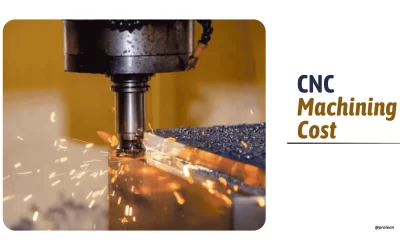
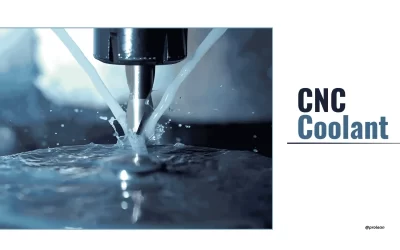

0 Comments